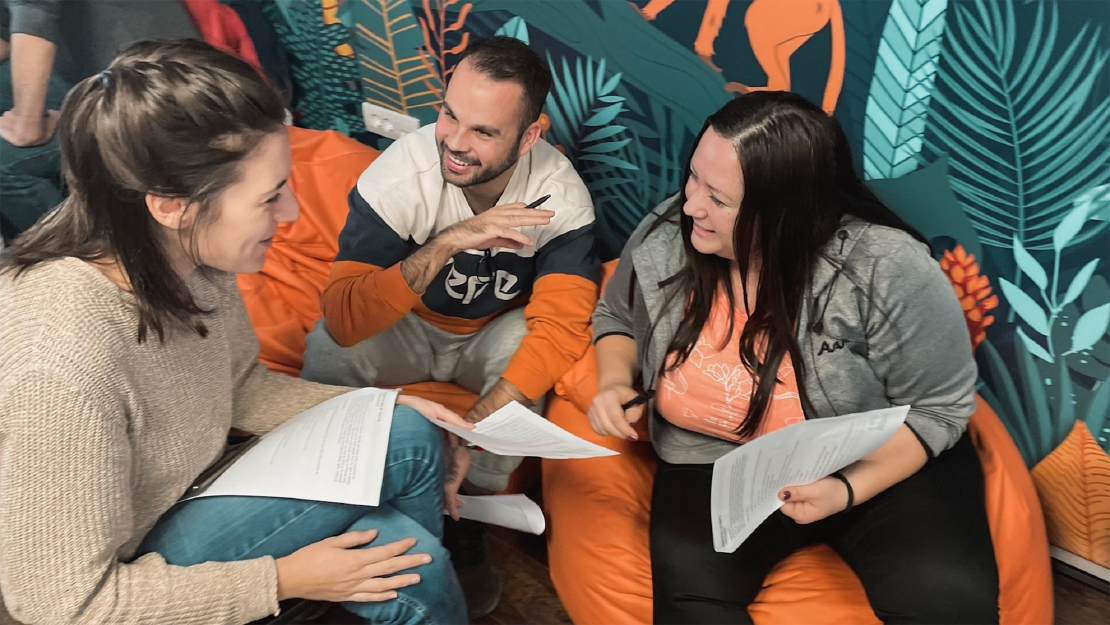
What does a rebranding process include beside a new logo?
Many entrepreneurs spend a disproportionate amount of time and money on building their visual image and believe that the most important representation of a brand is a high‑quality logo. A logo is an important but small part of the bigger picture that a brand is. It is also not the first thing you should concern yourself with when planning the rebranding. On the contrary, it is actually the last piece that binds everything together after abundant planning, research, figuring out where the company fits in the market, and in conclusion defining the purpose, direction, and underlying values of the company, and the strategies to incorporate them into the everyday conduct of a business.
The truth is that people are wired to not only remember the images but also to associate certain characteristics and emotions with them. Recall some of your favorite brands and notice that not only the logo comes to mind but also all the relevant characteristics and attributes it represents. Some of the simplest logos tell the deepest stories. This is the magic component that is worth all the painful footwork of diligently creating an effective brand development strategy. A positive and relevant association is proof of its effectiveness.
It is crucial to come up with a rebranding strategy that seeks to create a distinguishable and relevant identity around a business. You can also think of that identity as a company’s personality. This process involves multiple aspects of a business, including employer branding, hiring processes, design, customer service, advertising, tone, and, of course, a logo and a tagline. An effective approach to rebuilding and promoting a brand capitalizes on all key elements to produce a consistent, recognizable, and relevant identity.
What was the trigger for our rebranding?
Our story began in 1988 when the company was founded as the main information systems provider for huge manufacturing processes, and it was based on the right and strong beliefs that were nurtured to this day. Vilmos Somogyi and Tibor Dudjik have transferred these values of conducting business on a more personal level, creating a pleasant environment for the most productive work, and promoting the best practices in the industry to a modern ALAS company that is focused on IT outsourcing and software QA.
In the beginning, it was easy to communicate these shared goals on a small scale, as there were not so many employees. Some of the procedures were established but not cemented, and in some cases, it was possible to play it by ear.
This all changed when we reached the threshold of 50 employees. It was obvious that a sound structure and detailed procedures had to be built on an existing foundation. This also included putting into words our mission, vision, and values and creating a modern visual identity.
The new face of our company had to emphasize our strengths and shared goals and communicate the friendly, nurturing, but proactive and innovative persona of our company.

How did we make sure not to miss any important aspects in the process?
1. Planning
We didn’t have huge resources for the rebranding, so there had to be careful planning which involved several sectors of our company: top management, HR, and our employer branding and design/UX experts. Before the start, we conjured up a solid plan on how to approach the rebranding process from different aspects to get the full picture of the current state and the vision we are striving for. A practical tool for making a timeline and collaborating is a gantt chart. We used it in the efficiency app ClickUp that we use and it really helped visualize and track the progress.
2. Defining core values
Through several interviews with our top management we defined our company’s purpose, mission, and vision, as well as our values. Yes, we do realize there are too many of them, but these are the ones we truly do live and work by. Not a single one of them could be left out. We also made sure we don’t fall into a trap of listing the ones that are expected of us, the ones that you can see used by default by the majority of businesses.
3. In-house research
In the research phase, detailed interviews were conducted between our HR personnel and representatives of all the distinctive employee groups according to their position, experience, and the time they have been working with us. The result was a potent mixture of the current satisfaction level of the majority of our workforce, their pain points that could be addressed, and useful ideas that would be implemented. This phase also involved research on the reviews the company got on the job searching platforms.
4. Competitor research
To position our brand in the market, we did a thorough analysis of our direct and non‑direct competitors, creating the differentiator that would define us in all relevant aspects: visual design, tone and voice, our values and the way we communicate them, as well as our hiring processes and other company practices. Apart from the companies’ websites, we gathered public opinion through reviews on the company’s culture and hiring process. We obtained valuable information on certain advantages and mistakes. Learning from examples definitely helped us decide which changes we should apply going forward in our own brand building.
5. Organizing data
To get the most out of a huge amount of information, affinity mapping proved to be the best method for us and the most fun one. We put each piece of information on a post‑it and watched them group naturally. We finished up with a board divided into sections that later grew into our personas of potential employees, current employees, and clients. Each of these sections further had two distinct ones. The first one represented pain points — the mistakes we should avoid and problems we could solve. The other distinctive part was the positive aspects, things that answered the question “What makes them happy?” for our personas. Apart from being useful in showing patterns in a forest of information, we love this method because it is also physical, interactive, and suitable for teamwork.

6. Creating personas and persona based scenarios
There were five distinct target audiences, which had pain points and positive aspects defined in the research. Therefore, we already had a pretty accurate picture of what their stories would be like. Persona base scenarios helped us create personalized messages to solve personas’ pain points, which we would be using for marketing, sales, and hiring. They also helped us create a definite differentiator for each target audience.
7. Visual identity building
The first step towards building a visual identity for us was defining a color palette, which had to be bright, evoke happy and relaxed feelings, and distinguish us from the corporate blues and reds that were dominating the IT industry in Novi Sad. Afterwards, we have chosen a tagline as we didn’t have one before. “More personal, always” clearly communicates our approach both to clients and employees.
Finally, it was time to create a new logo. As we didn’t have a large team on hand but wanted the best results, we optimized our resources by posting a contest for creating a new logo on the DesignCrowd platform. We were very pleased with the outcome, as with the 150+ Designs package, we got 401 designs from 175 designers in just one week. A dozen of them ended up in our top selection. We believe that chance favors the prepared mind and that we got such great results due to our detailed description of what the logo should represent and the story behind the rebranding. Surely this would not be possible without the extensive research and preparations beforehand.
We are firm believers that each project should be covered with detailed documentation. It was important to us to create comprehensive brand guidelines where all the previous aspects were covered. In addition, those also had to include: brand’s archetype, tone, voice, fonts, usage of typography and logo, mood board with photos, and types of graphic that should be used.
8. Brand presence
After creating the visual identity, it is time to get to the real juice of the business and develop strategies on how to achieve a strong brand presence. We defined which platforms we wanted our brand to be present on, how the brand should be presented in the best light, and how these platforms benefit our long term plans. The best practice is to make a 3-5 year marketing plan. We gave a fresh face to all our company profiles on social media and job searching platforms and brought our company’s website up to date.
After all the work that has been done, it is advisable to check the consistency from a bird’s eye perspective and consider the outcomes of the whole process.
What were the outcomes?
The obvious outcome is a modern and coherent brand image to be proud of. It boosts morale and contributes to our company culture. It also helps increase clients’ trust in our competence.
But there are some interesting outcomes that shouldn’t be overlooked.
After the efforts we took upon ourselves to solve our employees’ pain points, and took into consideration relevant suggestions and ideas gathered through detailed in‑house interviews, we noticed a significant increase in our employees trust and willingness to participate in the current changes, and to approach management with fresh ideas and their honest opinions. That kind of feedback is invaluable and usually the hardest to get. Open communication and feelings of being relevant and heard were important for us to build into our culture, but it was still touching to see how fast it had caught on.
Having the visual identity built, we could also upgrade our employer branding strategy by thoughtfully assembling company gifts for important occasions, such as birthdays, work anniversaries, childbirths and onboarding as well as offboarding. They were carefully put together accounting not only the team spirit but also the unique personalities of our employees.
Renovating the workspace in new colors and spirit was extremely fun and has brought a sense of inspiration and anticipation for all. Through the design of the new workspace, we have communicated our ideas, the sentiment, and the values we want to promote. We even put up our values on a wall to be the first thing that any potential employee who comes on the premises for a job interview sees.
A family, which also includes our work family, always celebrates their successes. That is why we had a rebranding party to mark this milestone and have the opportunity to share the meaning and spirit of it with all the employees. We even had a signature cocktail named “ALAS” to promote what is the most important to us: friendship, teamwork, high standards.
We believe that we have made huge progress in being better recognized by potential employees and clients, and our brand being associated with the values that built ALAS into the company it is today.


